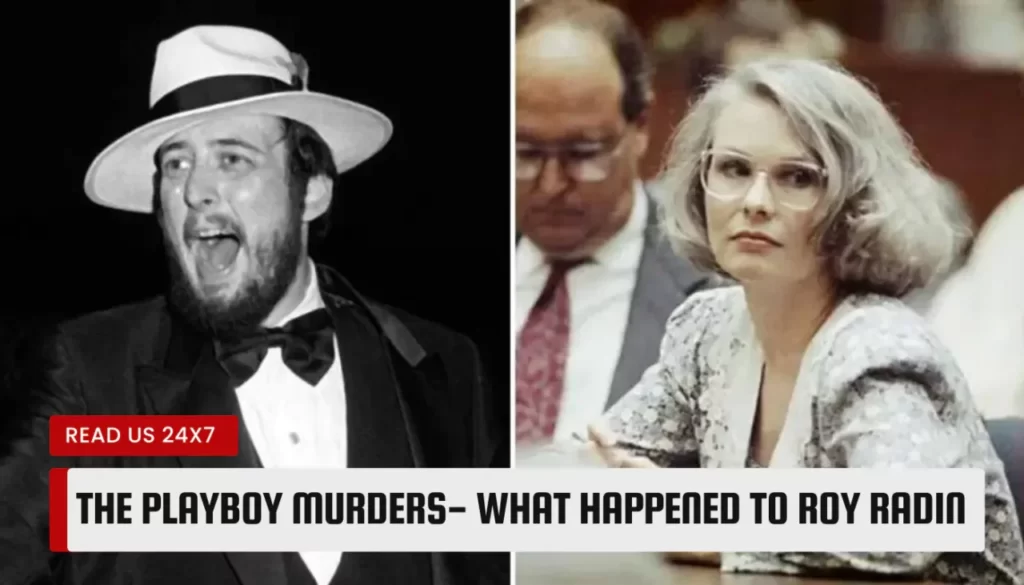Roy Radin was a wealthy and flamboyant producer who was brutally killed in 1983. His murder was part of a series of crimes known as the Playboy Murders, which involved a drug ring, a Hollywood movie deal, and a notorious serial killer. This article will explore the background, details, and mysteries of this sensational case.
Who Was Roy Radin?
Background and history
Roy Radin was born in 1949 in New York City. He grew up in a Jewish family and showed an early interest in show business. He started producing vaudeville shows at the age of 14 and later moved on to Broadway and Las Vegas. He became known for his lavish lifestyle, extravagant parties, and eccentric personality. He owned several mansions, cars, and animals, including a lion and a bear. He also had a reputation for being arrogant, abusive, and violent towards his associates and employees.
Connection to the Son of Sam killings
In 1977, Roy Radin was briefly suspected of being the Son of Sam, the infamous serial killer who terrorized New York City. The police found a .44 caliber revolver in his car, which matched the weapon used by the killer. However, Radin was cleared of any involvement after he passed a polygraph test and provided an alibi. He later claimed that he was framed by his enemies and that the gun was planted in his car.
The Playboy Murders: What Happened to Roy Radin?
Details of the Cotton Club murder
In 1983, Roy Radin was planning to co-produce a movie called The Cotton Club, a crime drama set in the 1930s, with the famous director Robert Evans. He hoped that this would be his breakthrough in Hollywood and that he would earn millions of dollars from the deal. However, his ambition and greed led him to his doom.
On May 13, 1983, Radin left his Beverly Hills hotel with a woman named Karen Greenberger, who claimed to be a friend of Evans and a liaison for the movie deal. She lured him into a car with three men, who were actually hired hitmen. They drove him to a remote canyon in Ventura County, where they tortured, shot, and blew up his body with dynamite. His remains were found a month later by a hiker.
Role in the Playboy drug ring
The motive behind Radin’s murder was a dispute over the profits and credits of The Cotton Club. Radin had allegedly demanded a larger share of the money and a producer credit, which angered Evans and his partners. However, there was another factor that complicated the situation: drugs.
Karen Greenberger, also known as Lanie Jacobs, was the girlfriend of Bill Mentzer, one of the hitmen who killed Radin. Mentzer was also a member of the Playboy drug ring, a group of drug dealers and smugglers who operated out of the Playboy Mansion. The ring was led by a man named Lanier Rayner, who was a close associate of Hugh Hefner, the founder of Playboy. The ring supplied cocaine and other drugs to celebrities, politicians, and businessmen, and made millions of dollars from the trade.
Radin was also involved in the drug ring, as he was a frequent customer and supplier of cocaine. He had connections with Colombian drug lords and had access to large quantities of the drug. He had also invested some of his money in the ring and expected a return. However, he became dissatisfied with the way the ring was run and threatened to expose it to the authorities. He also accused Rayner of stealing his money and demanded it back. This made him a target for the ring, who wanted to silence him and take his share of the movie deal.
Investigation and Trials
Efforts to solve the murders
The investigation of Radin’s murder was hampered by several factors, such as the lack of witnesses, the destruction of evidence, and the involvement of powerful and influential people. The police had to deal with corruption, cover-ups, and intimidation from the drug ring and the Hollywood elite. It took them six years to arrest and charge the four suspects: Greenberger, Mentzer, and two other hitmen, Alex Marti and Robert Lowe.
Conviction of Joel Rifkin
In a shocking twist, one of the hitmen, Robert Lowe, turned out to be Joel Rifkin, a notorious serial killer who confessed to killing 17 women in New York between 1989 and 1993. He was arrested in 1993 after a routine traffic stop and later admitted to being involved in Radin’s murder. He claimed that he was hired by Mentzer to help dispose of the body and that he did not know who Radin was or why he was killed. He also said that he did not participate in the torture or shooting of Radin, but only helped to plant the dynamite. He was sentenced to life in prison for his serial killings, but was never tried for Radin’s murder.
Unsolved Mysteries
The potential involvement of others
The four suspects who were convicted of Radin’s murder were not the only ones who had a role in the crime. There were others who were implicated or suspected of being involved, but were never charged or brought to justice. Some of these people were:
- Robert Evans: The director of The Cotton Club, who was accused of being the mastermind behind the murder plot. He denied any involvement and claimed that he barely knew Radin. He was never indicted, but his career and reputation suffered from the scandal.
- Lanier Rayner: The leader of the Playboy drug ring, who was also suspected of ordering the hit on Radin. He fled the country and went into hiding after the murder. He was later arrested in Switzerland and extradited to the US, where he pleaded guilty to drug charges and received a 25-year sentence. He died in prison in 2004.
- Hugh Hefner: The founder of Playboy, who was allegedly aware of the drug ring and the murder. He was never formally investigated, but he was questioned by the police and sued by Radin’s family. He maintained his innocence and said that he had no knowledge of the ring or the crime. He died in 2017 at the age of 91.
- David Berkowitz: The Son of Sam killer, who claimed that he knew Radin and that he was involved in a satanic cult that performed ritual murders. He said that Radin was one of the cult members and that he was killed as part of a ritual. He also said that he had information that could solve the case, but he refused to cooperate with the authorities. He is currently serving six life sentences for his killings.
Controversies and theories surrounding the case
The case of Roy Radin and the Playboy Murders has generated a lot of controversies and theories over the years. Some of the most popular ones are:
- The Cotton Club curse: Some people believe that the movie The Cotton Club was cursed and that anyone who was involved in it suffered misfortune or death. Besides Radin, other people who were associated with the movie and faced troubles were: Richard Gere, the star of the movie, who had a career slump and a divorce; Gregory Hines, another star of the movie, who died of cancer in 2003; Francis Ford Coppola, the original director of the movie, who was fired and replaced by Evans; and Mario Puzo, the author of the novel that the movie was based on, who died of a heart attack in 1999.
- The CIA connection: Some people believe that the Playboy drug ring was actually a front for the CIA and that Radin was killed because he knew too much. They claim that the ring was part of a covert operation to fund the Contras, a rebel group that fought against the socialist government of Nicaragua in the 1980s. They also claim that the CIA used the ring to blackmail and manipulate celebrities and politicians who were addicted to drugs.
- The Illuminati conspiracy: Some people believe that the Playboy drug ring and the murder were part of a larger conspiracy involving the Illuminati, a secret society that allegedly controls the world. They claim that the ring was a tool for the Illuminati to recruit and brainwash celebrities and politicians into their agenda. They also claim that the murder was a ritual sacrifice for the Illuminati and that the symbols and clues left at the crime scene were part of their code.
Conclusion
The murder of Roy Radin and the Playboy Murders is one of the most fascinating and mysterious cases in the history of crime. It involves a complex web of drugs, money, power, and violence that spans across different worlds and decades. It also raises many questions and doubts about the truth and justice of the case. Even after 40 years, the case remains unsolved and unresolved, leaving behind a legacy of intrigue and mystery.








